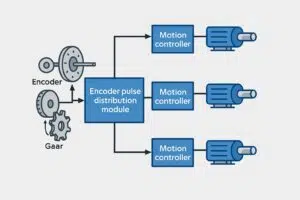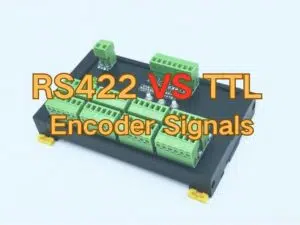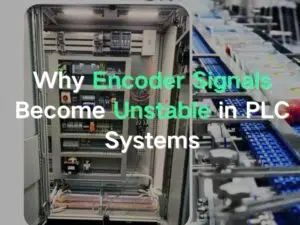In modern automation systems, engineers often need to share one encoder’s signal with multiple PLCs, HMIs, or motion controllers. Whether for redundancy, monitoring, or synchronized control, the question remains the same: how to split an encoder signal safely without losing accuracy or damaging devices.
This article explains the electrical risks of direct wiring, the principles of proper signal distribution, and a real-world example showing how an encoder pulse distribution module ensures precise feedback in multi-controller environments.
The Risk of Directly Splitting Encoder Lines
At first glance, splitting one encoder output into two devices seems simple — just connect both controllers in parallel with a Y-cable. However, this shortcut often leads to unpredictable signal distortion and inconsistent readings. Three main issues occur:
- Voltage Drop:
Each additional load draws current from the encoder output. When multiple inputs share the same line, the signal amplitude drops below the detection threshold, especially for TTL or 5 V encoders. Some controllers may register pulses incorrectly, while others miss them entirely. - Signal Reflection:
Encoder lines carry high-frequency square waves. When impedance matching is poor, reflections occur along the cable, distorting the pulse edges. This is especially problematic in long-distance connections and can result in false triggering or double-counting of pulses. - Timing Mismatch:
Different cable lengths introduce delay. Even a few microseconds difference between devices can cause phase errors in AB channels. When one PLC calculates rotation or speed based on misaligned signals, the entire motion control system becomes unstable.
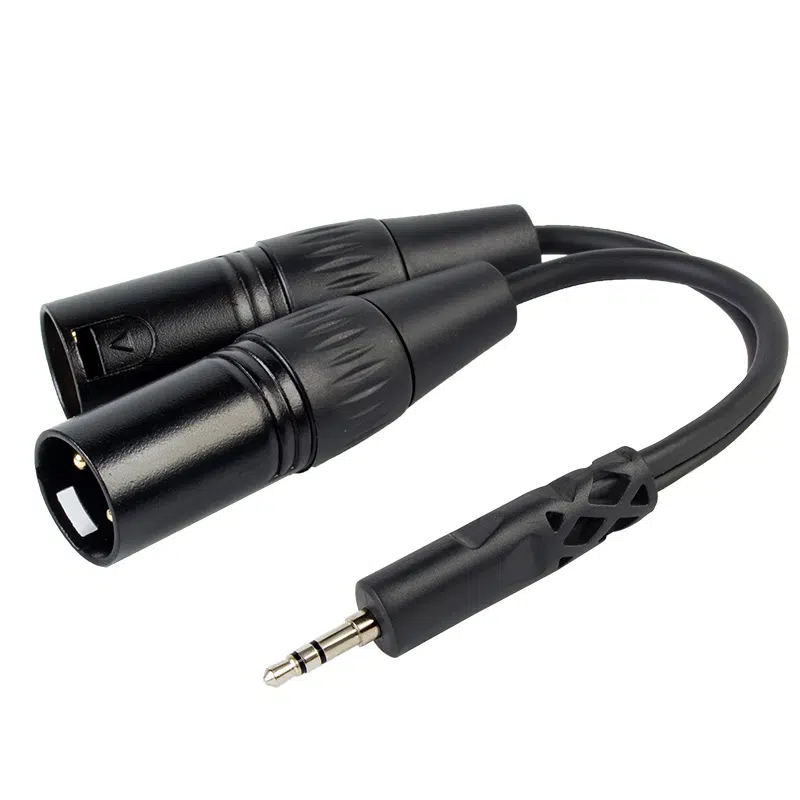
Em suma, directly splitting encoder lines is unsafe. It compromises both reliability and precision. Many engineers have tried the simple Y-cable method, but it frequently leads to drift, jitter, and unstable position feedback — particularly with differential signal output encoders (RS422) operating at high pulse rates.
Proper Method – Use Encoder Pulse Distribution Module
The correct and reliable way to split encoder signals is to use an encoder pulse distributor, also known as an ABZ splitter ou pulse distributor module.
This device acts as a signal buffer and amplifier. It receives the encoder’s ABZ input, regenerates it internally through isolated differential drivers, and sends out multiple synchronized outputs. Each output is clean, strong, and electrically isolated from others.
Key advantages of using an ABZ pulse distributor:
- Differential Driver Output: Quality pulse distributors output ABZ signals in differential format (e.g., RS422). This maximizes noise immunity and ensures original signal shape is retained over multiple outputs. RS422 differential signaling is especially effective at rejecting common-mode noise in industrial environments.
- Signal Buffering: The module actively regenerates and boosts encoder pulses, so each output (to each PLC or controller) receives a clean, full-level signal regardless of cable length or device load.
- Flexible Output Standards: Advanced modules usually support both RS422 and TTL levels, letting you adapt distribution for different input requirements.
By isolating outputs and buffering pulses, a pulse distributor circumvents voltage drops, reflections, and input mismatch. You can safely support multiple PLCs, motion controllers, or monitoring stations—all getting precise, reliable feedback.
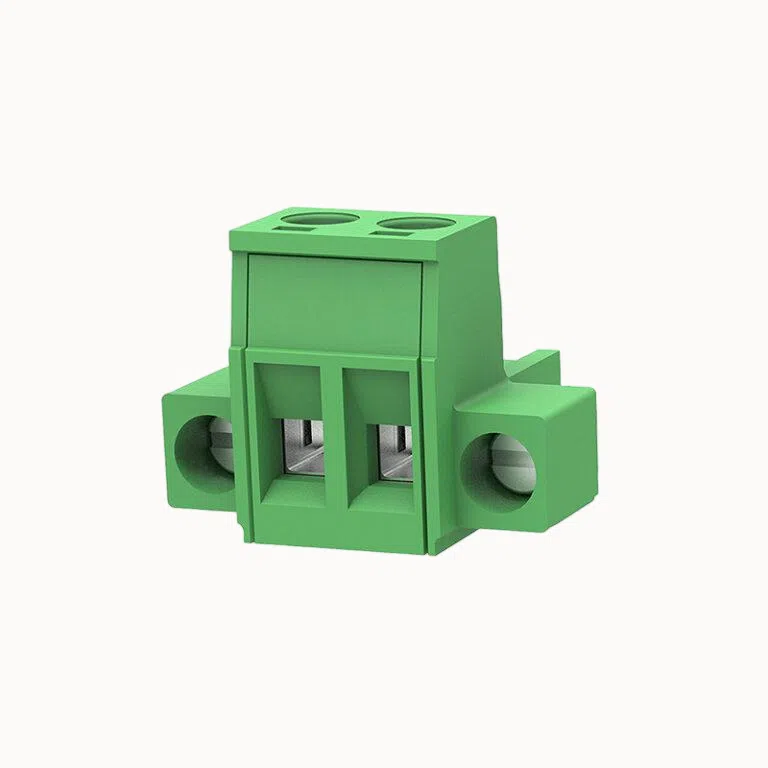
Model Number: EJ-XABZ
- Input: Differential A+, A–, B+, B–, Z+, Z–
- Output Channels: 2 independent RS422 differential outputs
- Compatible Voltage: 5–24 V DC
- Signal Type: ABZ incremental encoder pulses
- Max Frequency: 300 kHz
- Isolation: Optoelectronic isolation per channel
- Mounting: 35 mm DIN rail
This model is ideal for applications where one encoder needs to share its signal with two PLCs or control devices without losing synchronization.
Wiring Example: One Encoder → Two PLCs
Wiring from one encoder to two PLCs using a pulse distributor looks like this:
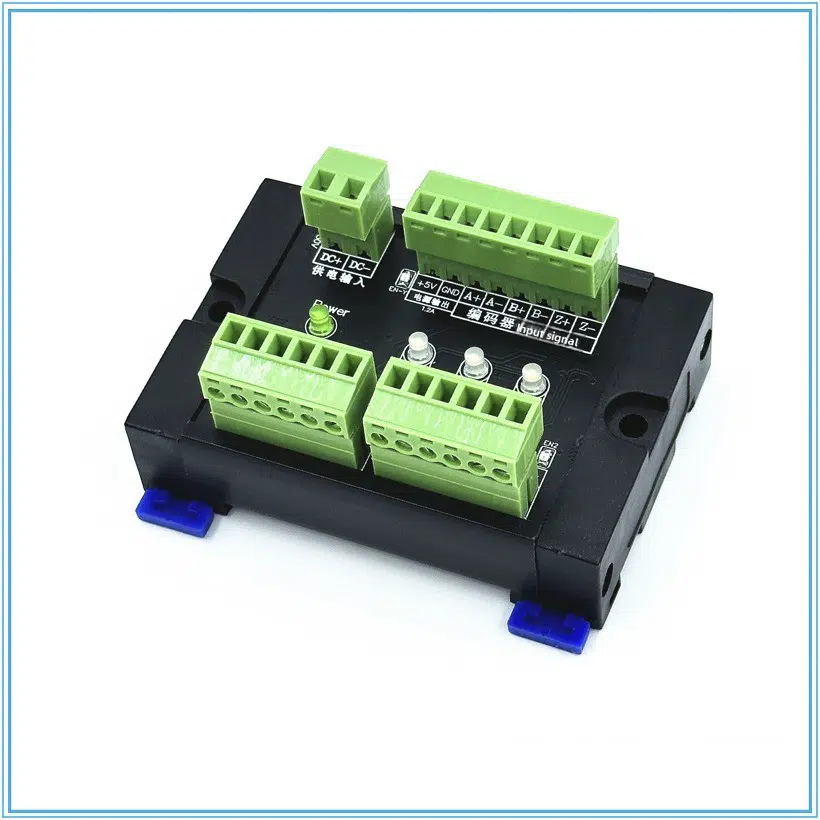
Layout:
- Encoder A/B/Z → Input terminals of pulse distributor
- Output CH1 → PLC #1 encoder input (A1/B1/Z1)
- Output CH2 → PLC #2 encoder input (A2/B2/Z2)
Signal Standards Supported:
- RS422 differential (A+, A–, B+, B–, Z+, Z–)
- TTL or HTL single-ended
- Open collector (with pull-up resistors)
Each output is driven by an independent RS422 line driver, providing consistent amplitude and timing across all channels. Because each line is actively regenerated, there is no cross-talk or degradation of waveform integrity.
Application Example – Dual Feedback in Conveyor Control
Consider an automated conveyor system that needs both speed feedback for motor regulation and length feedback for cutting or labeling. One incremental encoder mounted on the conveyor shaft can easily provide both signals if distributed correctly.
By installing an ABZ pulse distributor, the encoder’s A/B/Z outputs are split safely:
- The first output goes to the main PLC, controlling motor speed and acceleration.
- The second output connects to a secondary controller, responsible for measuring product length or triggering downstream processes.
Both controllers receive identical, synchronized pulses — even at high frequency — ensuring accurate coordination between motion and measurement.
If you plan longer runs or add devices, see our Long-Distance Encoder Wiring Guide for tips on minimizing signal loss and interference.
FAQs
A1: No. Directly splitting encoder lines causes voltage drop, signal reflection, and timing mismatch. Always use a pulse distribution module for safe connection.
A2: An ABZ splitter safely distributes one encoder’s A, B, and Z pulses to multiple devices with isolated, synchronized RS422 differential outputs.
A3: It buffers and regenerates encoder pulses through line drivers, maintaining voltage level, timing accuracy, and noise immunity across all output channels.
A4: Most modules support RS422 differential, TTL, and HTL outputs, ensuring compatibility with industrial PLCs, motion controllers, and data acquisition systems.
A5: Differential RS422 output resists noise, ensures clean square waves, and allows long-distance transmission without interference or phase distortion.
A6: It provides isolated, synchronized encoder outputs for multi-PLC wiring, prevents reflection, simplifies maintenance, and ensures stable industrial feedback control.
Call to Action
Need to connect one encoder to multiple PLCs safely?
Explore AOSI Encoder Pulse Distribution Modules – professional ABZ splitters supporting RS422, TTL, and differential outputs for reliable multi-PLC integration.


